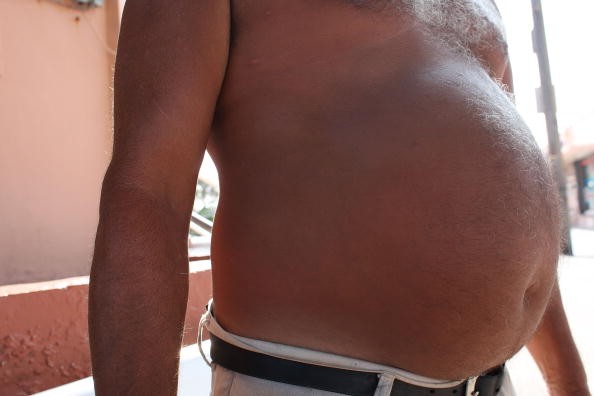
Having a beer belly is a bad thing. A large national study has found that carrying fat around the middle of your body greatly increases your risk for heart disease and death, even if your scale tells you that you are a healthy weight for your height.
Doctors usually determine if you are obese based on your body mass index (BMI), which is calculated from your height and weight. But a BMI cannot distinguish between body fat and lean muscle weight. Measuring a person's waist-to-hip ratio may give a more accurate picture because it accounts for obesity around your abdomen, which is visceral fat, the fat stored around internal organs. Waist-to-hip ratio is your waist measurement divided by your hip measurement. Central obesity is defined by the World Health Organization as a ratio higher than 0.90 for men or 0.85 for women.
Researchers from the United States, Czech Republic, and Canada used data on 15,184 men and women over age 18. The participants were followed for an average of more than 14 years, during which there were 1,404 deaths from cardiovascular diseases. The association of waist-to-hip ratio with increased risk persisted even after the researchers controlled for such factors as smoking, a history of heart attack, diabetes, race, poverty, and blood cholesterol levels.
They found that a man of normal BMI with large belly has an 87% greater risk for death than a man with the same BMI, but a normal waist-to-hip ratio. Similarly, women with normal BMIs and big bellies were found to have a 48% higher risk than women with normal BMI and average belly fat.
The study concluded that people with normal weight but who are obese around the middle have worse long-term survival than anyone of any weight that has a normal fat distribution. Men of normal weight who had big bellies had more than twice the risk for death as overweight or obese men with normal waist-to-hip ratios.
The study was published in Annals of Internal Medicine.



